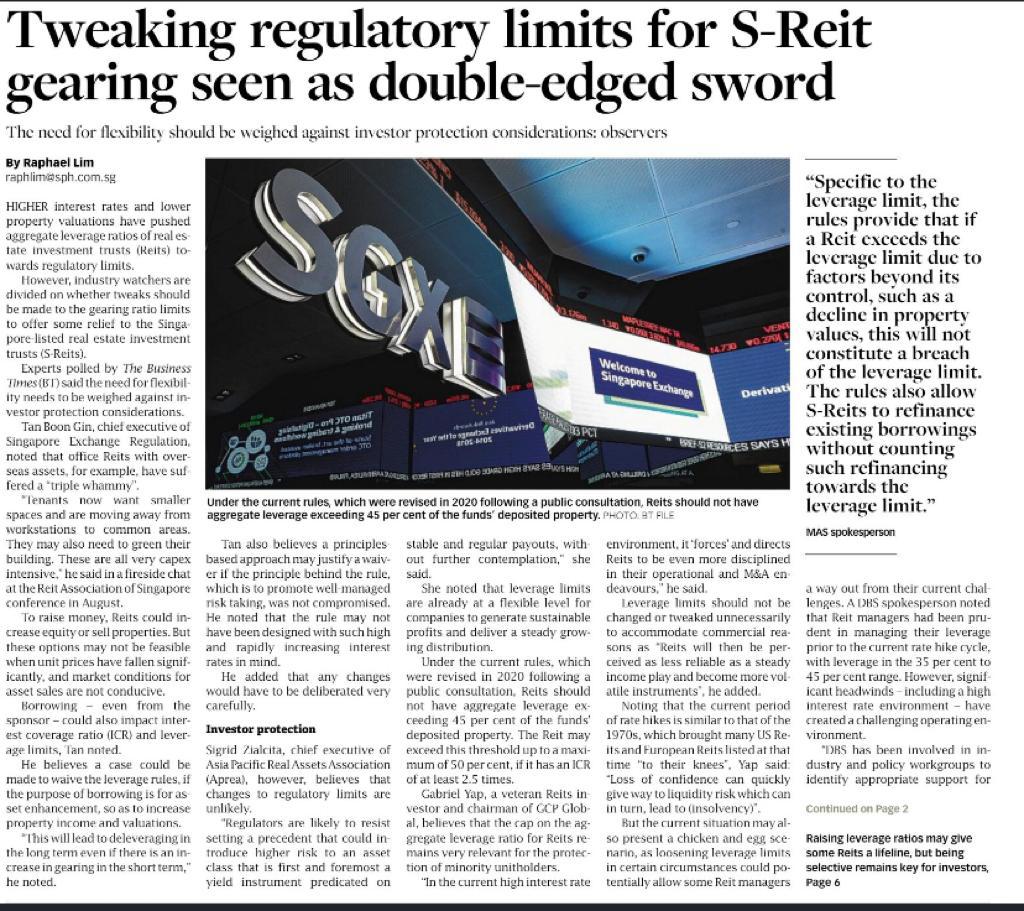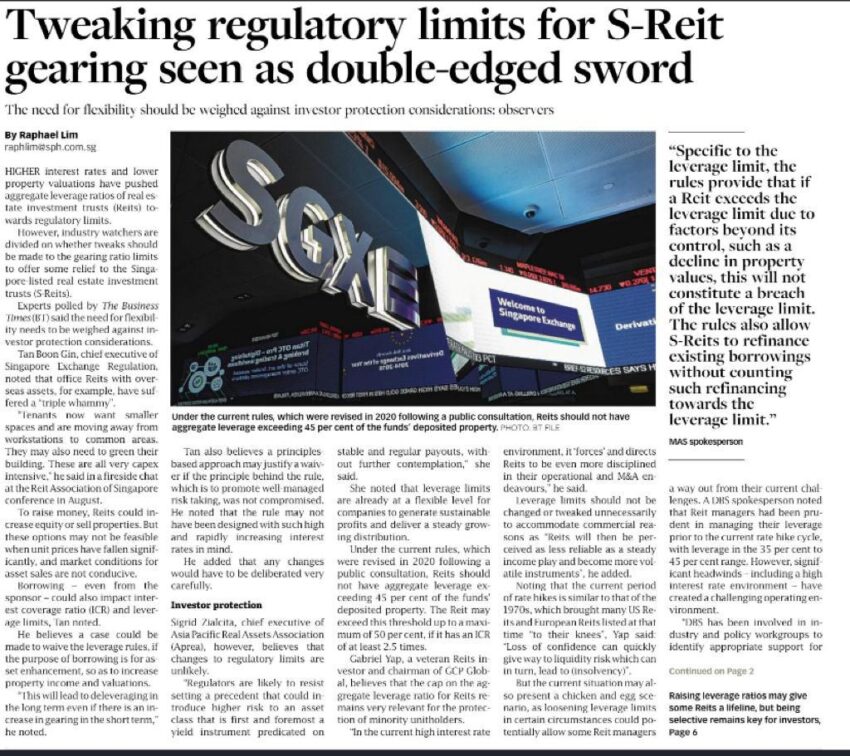Yesterday, there was an article which I read that caught my attention immediately.
The title itself was self-provoking as “tweaking” regulatory limits for S-REITs gearing probably warrants a deeper discussion on the topic itself.
This news is not surprising and has been in consideration for many years, but it shows up and revolves around when S-REITs as an industry itself are struggling, especially the past 1-2 years at the back of high interest rates, sluggish demand, and lower property valuations all providing not one, two, but triple whammy to the REITs.

To reiterate what constitutes the current rules for S-REITs (which were revised in 2020), S-REITs should not have aggregate leverage exceeding 45% of the total assets to equity. REITs may exceed this threshold up to a maximum of 50% gearing only if it has an interest coverage ratio (ICR) of at least 2.5x.
The discussion here is that specific to the pointed leverage limit, it should not be included in the calculation of the gearing if the factors involved are beyond the control of the REITs. For example, a decline in property valuation may increase the gearing of the REITs significantly as a relative to the overall equity of the company.
Taking Manulife REIT for instance, it started off 2018 with a healthy occupancy level of 96.7% and a gearing ratio of 37.2%. Things were going well back then with low interest rate environment, cheap cost of borrowing, healthy tenant demand and retention, and a gearing headroom that is far away from the cap limit.
The first indication of things turning sour was during Covid days starting in 2020 when the economy had to shut down and workers working remotely from the comfort of their own home. Even after Covid dissipated, there were concerns about if hybrid work model is here to stay for good.
The office landscape situation in the US never quite bounced back from thereon.
- 2018: Occupancy 96.7% Gearing 37.2%
- 2019: Occupancy 95.8% Gearing 37.7%
- 2020: Occupancy 93.4% Gearing 41.0%
- 2021: Occupancy 92.3% Gearing 42.8%
- 2022: Occupancy 88.0% Gearing 48.8%
Occupancy level started heading down and retention was harder due to competition offering lower rates. Even if the REIT managed to retain existing tenants, many of the reversions in key markets were done at a negative rental reversion.
With weaker demand and lower occupancy adding on to the pile of misery of higher interest rates and cap rates, property valuation has only one direction to go and it is down.
As a result of these factors all playing out one after another, gearing has to increase.
REITs is itself a leverage instrument.
When times are good, we usually see REITs shine partly because of its leverage ability to be able to expand and buy assets to grow its AUM.
But like all things said, only when the tide turns, we will know who is swimming naked.
We now know who is swimming naked and in trouble of bailing out among the S-REITs universe.


